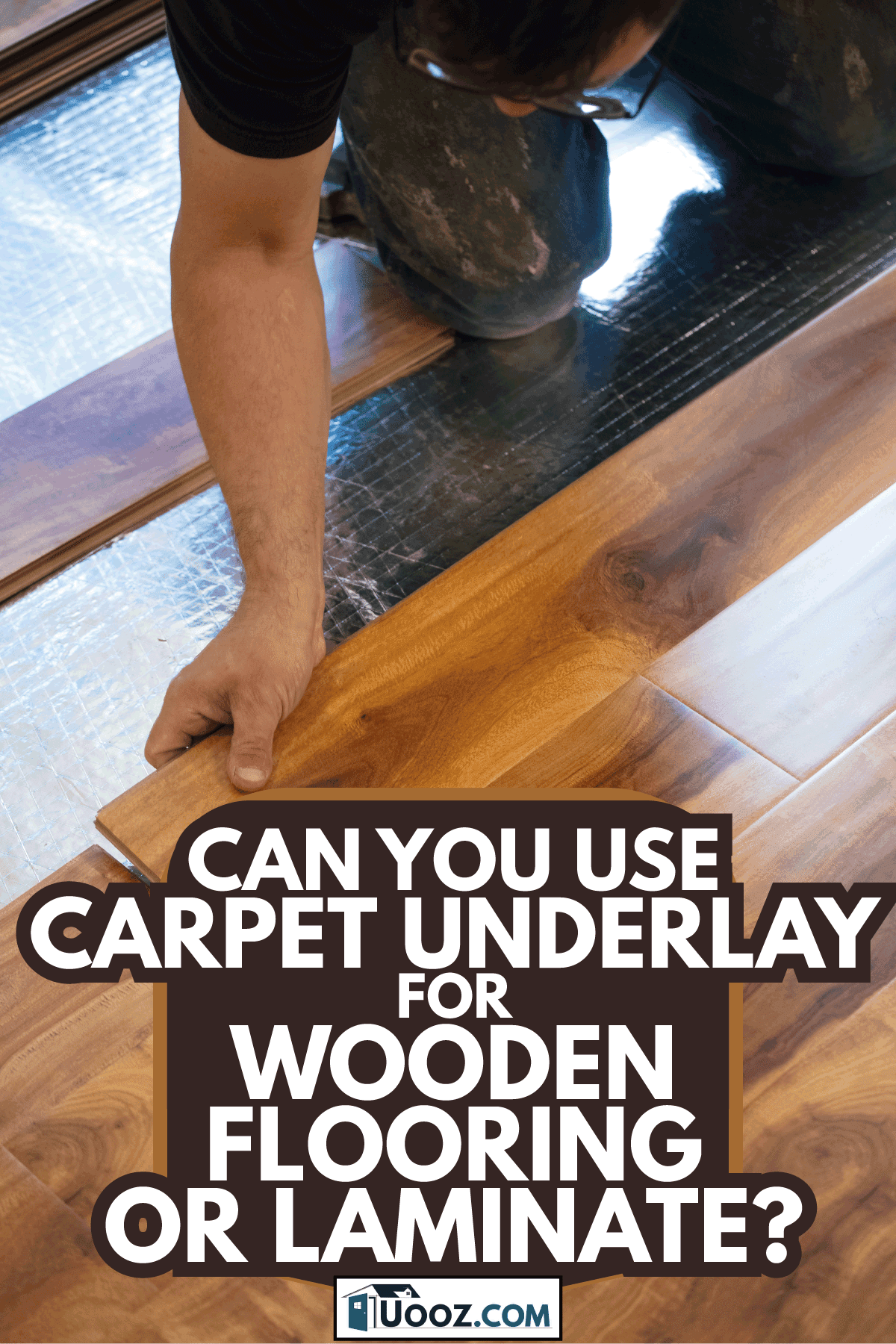You’re standing in your new home, ready to install your beautiful, durable laminate flooring. But then, a question pops into your head: “Can I use the old carpet underlay I have lying around for this project?” It seems like a good way to save money and reduce waste, but is it truly the best option for your laminate floors?

Image: uooz.com
The short answer is: it depends. While using carpet underlay for laminate flooring isn’t technically prohibited, it’s not always the ideal solution. This article will delve into the pros and cons, exploring the factors you need to consider before making a decision.
The Purpose of Underlay
Before diving into the specific pros and cons of using carpet underlay for laminate, let’s first understand the crucial role of underlay in any flooring installation. Underlay acts as a buffer between your subfloor and your flooring, serving several important functions:
- Creates a More Comfortable Surface: Underlay softens the impact of your footsteps, making your floors more comfortable to walk on. This is especially important for rooms with high foot traffic, like kitchens and hallways.
- Reduces Noise: Underlay acts as a sound barrier, minimizing the echoes and footsteps that can be heard in other rooms. This is especially beneficial in apartments or homes with multiple levels.
- Provides a Smoother Surface: Underlay helps to even out minor imperfections in the subfloor, providing a more stable and even surface for your flooring to be installed on. This helps to prevent the floors from squeaking or making other noises as you walk on them.
- Protects Your Flooring: Underlay can also help to protect your flooring from moisture and damage. This is particularly important for laminate flooring, which can be susceptible to water damage.
Why Carpet Underlay May Not Be Ideal for Laminate
While carpet underlay might seem like an economical alternative, it is not always the ideal choice for laminate flooring. Here’s why:
1. Density and Structure
Carpet underlay is designed to cushion and support a thick, plush carpet, often featuring a different density and structure compared to underlay designed for rigid flooring like laminate. While some carpet underlays can be surprisingly firm, many are too soft and compressible, which can create an uneven surface beneath the laminate. This unevenness can cause clicking, popping, or even instability in the laminate floor.

Image: www.stkittsvilla.com
2. Moisture and Mold
Carpet underlay is typically made from materials that are prone to absorbing moisture. This can create a breeding ground for mold and mildew, especially in areas with high humidity or potential for water leaks. While laminate flooring itself is generally resistant to moisture, moisture trapped beneath the floor can lead to problems in the long run.
3. Compression and Durability
Carpet underlay is designed to withstand the repetitive pressure of foot traffic. However, laminate flooring is a much more rigid material that transfers pressure differently. This can cause the carpet underlay to compress over time, leading to unevenness and potentially compromising the integrity of the laminate floor.
What to Use Instead of Carpet Underlay for Laminate Flooring
Fortunately, there are a variety of underlay options specifically designed for laminate flooring. These underlay types ensure a smooth, stable surface for your laminate and are typically more resistant to moisture and compression:
1. Foam Underlay
Foam underlay is a popular choice for laminate flooring. It offers excellent sound dampening and cushion, is relatively easy to install, and usually comes in a roll, making it convenient for DIY projects. Look for foam underlay with a higher density for greater support and durability.
2. Cork Underlay
Cork underlay is a natural and sustainable option known for its sound absorption and thermal insulation properties. It offers excellent comfort and support and can add a natural warmth to your floors. However, it is generally more expensive than foam underlay and may require a more careful installation.
3. Composite Underlay
Composite underlay combines various materials, such as foam, rubber, and fiberglass, to create a high-performance underlay. It often offers excellent moisture resistance and durability, making it a great option for areas prone to moisture or high foot traffic.
4. Moisture Barrier
In areas with a higher risk of moisture, consider using a moisture barrier in addition to your chosen underlay. This can be a thin plastic sheet placed directly on top of the subfloor to prevent moisture from reaching the underlay and your laminate floor.
Making the Right Choice
The best underlay option for your laminate flooring depends on several factors, including:
- Your Budget: Foam underlay is generally the most affordable option, while cork and composite underlays tend to be more expensive.
- The Room’s Condition: If your subfloor is relatively smooth and level, a less dense foam underlay may suffice. But if you have a rough or uneven subfloor, a denser or composite underlay is recommended.
- Your Climate: If you live in an area with high humidity or frequent water spills, consider a moisture-resistant underlay or a moisture barrier to help protect your laminate floors.
- Your Need for Insulation: Cork underlay offers excellent thermal insulation, making it a good choice for rooms where you want to lessen the transfer of heat or cold.
Can You Use Carpet Underlay For Laminate Flooring
Conclusion
While you might be tempted to use your existing carpet underlay to save money, it’s best to choose an underlay specifically designed for laminate flooring. This will ensure that your laminate floor is properly supported, protected, and performing at its best. Understanding the unique needs of laminate flooring, considering your budget, and evaluating the conditions of your subfloor and climate will help you make the most informed decision for your flooring project and guarantee a beautiful, long-lasting, and comfortable floor surface.





